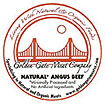Teardrop Test for Diabetics
By
Ker
Than
LiveScience Staff Writer
posted: 18 August 2006
10:43 am ET
A device that uses teardrops to measure the amount
of sugar in a person's blood could soon allow
diabetics
to forgo painful daily pinpricks.
"I hope in two to three years to have prototypes
out and that someday you'll be able to go to a
grocery store and test your sugar, just like you
test your blood pressure," said project leader
Florencio Hernandez of the University of Central
Florida.
The test involves a gold-salt solution that generates
detectable gold
nanoparticles when exposed to sugar,
also known as glucose. The glucose can come from
a person's blood, urine, or tears, but the latter
is best, Hernandez said.
The amount of shed gold nanoparticles
is directly related to glucose concentration and
can be read using a CD-sized instrument called
a UV-Vis spectrophotometer.
The chemical reaction between the gold and sugar
is visible: Depending on the concentration of
sugar, the solution turns from light pink to a
bloody red.
A test that makes you cry
For all the non-actors out there who can't cry
on demand, a substance could be sniffed that stimulates
the tear glands. This is why cutting onions can
make you cry: chemicals stored different compartments
of the onion cell mix together to form an unstable
acid; the acid decomposes into a gas which wafts
through the air and into one's eyes. Nerve endings
in the eyes are stimulated and tears form.
"You can't put drops in the eye because that
would change the concentration of glucose that
you're going to rate," Hernandez told LiveScience.
The researchers say the new method would not only
be painless, but that it could also provide a
way to detect rising sugar levels years before
a person would normally visit their doctor for
a diabetes test. It could also serve as an early
alert for pregnant women at risk for gestational
diabetes.
"That was the whole idea, to have it be preventative,"
Hernandez said. "That way, if you see a pattern
you can address the problem before it really becomes
grave, before the disease does a lot of damage."
Diabetes, type 1 and 2, affects 20.8 million people
in America, according to the Centers for Disease
Control. It is the sixth-leading cause of death
nationally and can lead to heart
disease, stroke,
high
blood pressure, blindness, kidney disease
and nervous system disorders.
Currently, the most common way that diabetics
measure their blood-sugar levels is by pricking
their fingers to draw blood
, which is then read by a machine.
Hernandez presented his work at the American Chemical
Society national meeting earlier this year.
* The
Odds of Dying
* Sugar Not
So Sweet
* Diabetes
Pills Have Double Benefit
* Manufactured
Nanoparticles Might Pose Health Threat















